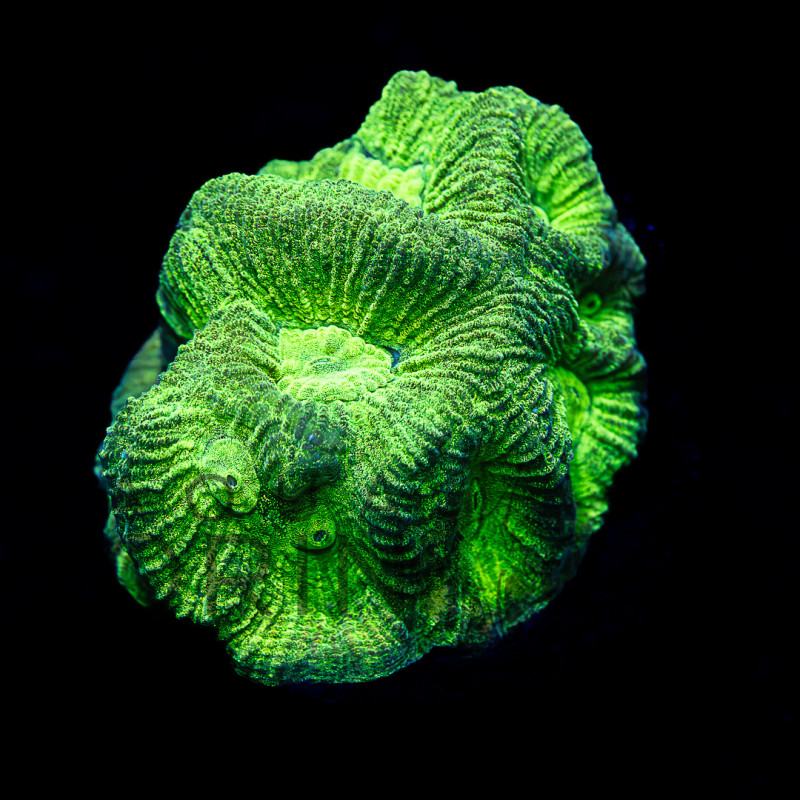More info
Goniastrea Ultra Grenn
One-of-a-kind piece - "WYSIWYG"!
What You See Is What You Get
Favias and Favites
When it comes to diversity, it's hard to think of a visually more diverse group of corals than Favias and Favites. These brain-shaped corals develop multiple growth forms and come in almost every imaginable color and pattern.
See below for additional care tips for Favias and Favites.
Location
Favites are found in the islands of the Indo-Pacific, including Fiji, Tonga, the Solomon Islands, and the Great Barrier Reef.
Lighting
Medium to high lighting would work well. Favites don't change their coloration much with the intensity and type of lighting provided, unlike many other LPS corals. However, they may require a longer acclimation period to intense lighting.

Low light |
Low light is between 30 - 50 PAR per unit area |

Medium light |
Medium light is between 50 - 150 PAR per unit area |
|
Intense light |
Intense light is above 150 PAR per unit area |
Water Flow
We recommend keeping the coral in an area of relatively low flow in the aquarium. Too much flow can stress this species and prevent it from fully expanding.
Feeding
Like most corals, Favias and Favites rely heavily on their zooxanthellae, but in our experience, they also benefit from direct feeding. There are various frozen fish foods available that make excellent meals for Favias. We like to feed a mix of meaty foods such as shrimp, fish, and squid, with vitamin and highly unsaturated fatty acid (HUFA) additives. The size of the food should be small enough for the polyp to fully ingest. Favites generally have smaller mouths than Favias.

Alert
Favites are one of the corals that extend long tentacles. In fact, Favites may exhibit more aggressive behavior than larger Favias. These tentacles are often used as a means of defense against other invasive coral colonies. The white tips contain a concentration of nematocysts that can damage more delicate corals. Most of the time, this is not a significant issue, but for safety, we recommend placing it in a location away from other corals initially.







